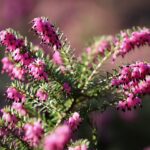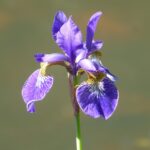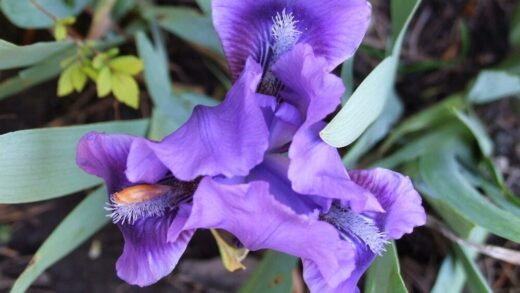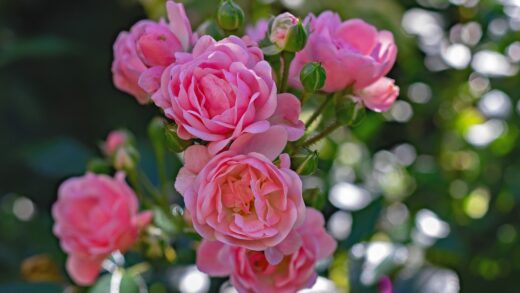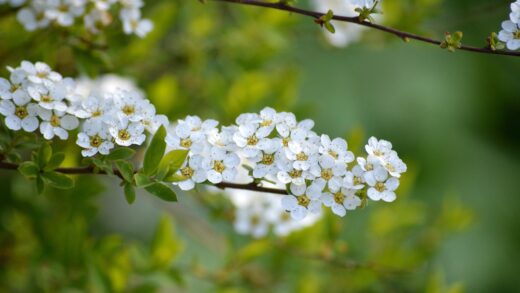Providing the Asiatic dayflower with the appropriate balance of nutrients is essential for promoting lush foliage, vibrant flower color, and overall plant vigor. While this species is relatively adaptable and can survive in moderately fertile soils, it will perform at its best when its nutritional needs are consistently met throughout the growing season. The plant requires a balanced supply of the three primary macronutrients: nitrogen (N) for healthy leaf and stem growth, phosphorus (P) for strong root development and flower production, and potassium (K) for overall plant function and disease resistance. Understanding when and how to supply these nutrients through fertilization is a key aspect of its comprehensive care.
The foundation of good plant nutrition begins with the soil. A soil that is rich in organic matter, such as compost or well-rotted manure, will naturally contain a wide range of essential nutrients that are released slowly over time. Before planting, amending the soil with these materials provides a strong nutritional base that can support the plant’s initial growth. This approach to soil health often reduces the need for frequent supplemental fertilization, as the organic matter acts as a natural, slow-release fertilizer that feeds the soil ecosystem and, in turn, the plant.
Despite a well-prepared soil, the Asiatic dayflower, especially when grown vigorously or in containers, may benefit from additional fertilization during its peak growing period. The goal of supplemental feeding is to replenish the nutrients that the plant consumes as it grows, ensuring it has the resources needed to sustain its rapid development and prolific flowering. The choice of fertilizer and the frequency of its application should be tailored to the specific growing conditions and the observed health of the plant.
It is important to avoid over-fertilization, which can be more detrimental than under-fertilization. An excess of nutrients, particularly nitrogen, can lead to overly lush, weak foliar growth at the expense of flowers. It can also cause a buildup of salts in the soil, which can damage the plant’s roots and inhibit water uptake. A cautious and balanced approach, where fertilizer is applied according to the manufacturer’s recommendations and in response to the plant’s needs, will yield the best results.
Understanding essential nutrients
The growth of the Asiatic dayflower is dependent on a range of essential nutrients, which are typically divided into macronutrients and micronutrients based on the quantities required by the plant. The primary macronutrients—nitrogen, phosphorus, and potassium—are needed in the largest amounts. Nitrogen is a critical component of chlorophyll, the pigment that allows plants to photosynthesize, and is therefore vital for producing deep green, healthy leaves and strong stems. A deficiency in nitrogen will often manifest as yellowing leaves (especially older, lower ones) and stunted growth.
More articles on this topic
Phosphorus plays a central role in energy transfer processes within the plant, such as photosynthesis and respiration. It is particularly important for the development of a robust root system, which is the foundation of a healthy plant, and it is also crucial for initiating the formation of flowers and seeds. A plant lacking sufficient phosphorus may exhibit delayed maturity, poor flowering, and sometimes a purplish discoloration of the leaves, as its ability to capture and use energy is compromised.
Potassium is involved in regulating many physiological processes, including the opening and closing of stomata (the pores on leaves that control gas exchange and water loss), water uptake by the roots, and the activation of various enzymes. It is essential for the overall hardiness of the plant, helping it to withstand stress from drought, temperature fluctuations, and disease. Symptoms of a potassium deficiency can include browning or scorching along the leaf margins, weak stems, and a general susceptibility to pests and diseases.
In addition to these primary nutrients, the Asiatic dayflower also requires secondary macronutrients like calcium, magnesium, and sulfur, as well as a variety of micronutrients such as iron, manganese, and zinc, albeit in much smaller quantities. Fortunately, a healthy soil rich in organic matter and the use of a balanced, complete fertilizer will typically provide all of these essential elements in sufficient amounts. Paying attention to the plant’s appearance is the best way to diagnose potential nutrient deficiencies and address them before they become severe.
Choosing the right fertilizer
Selecting the appropriate fertilizer for the Asiatic dayflower involves choosing a product that provides a balanced nutrient profile suitable for flowering annuals. A general-purpose, balanced fertilizer is often the best choice. These fertilizers are formulated with roughly equal proportions of nitrogen, phosphorus, and potassium, indicated by numbers on the packaging such as 10-10-10 or 20-20-20. This balanced ratio ensures that the plant receives an adequate supply of all three primary macronutrients, supporting all aspects of its growth from foliage to flowers.
More articles on this topic
Fertilizers are available in several different forms, including liquid, granular, and slow-release formulations, each with its own advantages. Liquid fertilizers are mixed with water and applied during regular watering. They are fast-acting, as the nutrients are immediately available for the plant’s roots to absorb, making them an excellent choice for providing a quick nutritional boost or for feeding container-grown plants where nutrients can be leached out more quickly.
Granular fertilizers are applied to the soil surface around the plant and are then watered in. They release their nutrients more slowly than liquid feeds as the granules dissolve over time. This provides a more sustained supply of nutrition and reduces the frequency of application. Slow-release fertilizers, often formulated as pellets or coated granules, are designed to break down and release nutrients over an extended period, sometimes for several months. These are very convenient as they may only need to be applied once at the beginning of the growing season.
For those who prefer an organic approach, there are many excellent natural fertilizers available. Options like fish emulsion, compost tea, or kelp meal provide a balanced range of nutrients and also contribute to improving the long-term health and structure of the soil. These organic fertilizers work by feeding the beneficial microorganisms in the soil, which in turn make nutrients available to the plant. While they may act more slowly than synthetic fertilizers, they promote a healthier and more sustainable growing environment.
Application timing and frequency
The timing and frequency of fertilizer application are just as important as the choice of fertilizer itself. Fertilization should be aligned with the plant’s natural growth cycle to be most effective. The best time to begin feeding the Asiatic dayflower is in the spring, a few weeks after new growth has started or after seedlings have been transplanted into the garden. This initial application provides the nutrients needed to support the plant’s rapid vegetative growth phase, helping it to build a strong framework of leaves and stems.
During the peak growing season, from late spring through summer, when the plant is actively growing and flowering, it will have the highest demand for nutrients. For plants fed with a liquid fertilizer, an application every two to four weeks is a good general guideline. For those using a granular fertilizer, an application every four to six weeks may be more appropriate, depending on the product’s formulation. It is always best to follow the specific instructions provided on the fertilizer packaging for application rates and frequency to avoid over- or under-feeding.
As late summer transitions into autumn, the plant’s growth rate will naturally begin to slow down. In response to this, the frequency of fertilization should be gradually reduced and eventually stopped altogether by early to mid-autumn. Continuing to feed the plant late in the season can encourage a flush of tender new growth that will be susceptible to damage from the first frosts. Allowing the plant to harden off naturally prepares it to complete its life cycle.
It is crucial to water the soil thoroughly before applying any type of fertilizer. Applying fertilizer to dry soil can concentrate the nutrient salts around the roots and cause them to burn, leading to significant damage to the plant. Watering first ensures that the fertilizer is diluted and distributed more evenly throughout the root zone, allowing for safe and effective absorption. After applying a granular fertilizer, it should also be watered in well to help it dissolve and move down into the soil.
Organic vs. synthetic fertilizers
When deciding how to fertilize the Asiatic dayflower, gardeners have the choice between organic and synthetic fertilizers, each with its own set of characteristics and impacts on the plant and soil. Synthetic fertilizers are manufactured from refined mineral salts and are designed to deliver a precise and concentrated dose of nutrients. They are typically fast-acting, and because their nutrient content is standardized, it is easy to know exactly what is being applied to the plant. This makes them effective for quickly correcting a specific nutrient deficiency or providing a rapid boost to plant growth.
However, synthetic fertilizers have some potential downsides. They primarily feed the plant directly and do little to improve the long-term health or structure of the soil. Overuse can lead to a buildup of salts in the soil, which can harm beneficial soil microorganisms and damage plant roots. They are also more susceptible to leaching, where excess nutrients are washed away by rain or irrigation, potentially contaminating groundwater. Their concentrated nature also means that there is a higher risk of over-fertilization and burning the plant if they are not applied carefully according to the instructions.
Organic fertilizers, in contrast, are derived from natural sources such as plant matter (compost, kelp), animal products (manure, bone meal), or mined minerals. They work by enriching the soil and feeding the complex web of bacteria, fungi, and other organisms that live within it. These microorganisms then break down the organic matter and release the nutrients in a form that the plants can absorb. This process is slower and more gradual, providing a steady, gentle supply of nutrients over a longer period.
The primary benefit of organic fertilizers is that they improve soil health. They add organic matter, which enhances soil structure, increases water retention, and promotes biodiversity in the soil. While they may be slower to show results compared to their synthetic counterparts, they contribute to a more sustainable and resilient garden ecosystem in the long run. For the Asiatic dayflower, a combined approach can be very effective: building a foundation of healthy, organically rich soil and then using either organic or a judicious application of synthetic fertilizer as a supplement if needed during the peak growing season.











